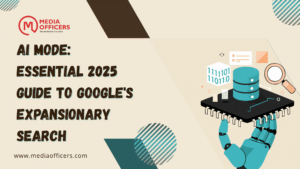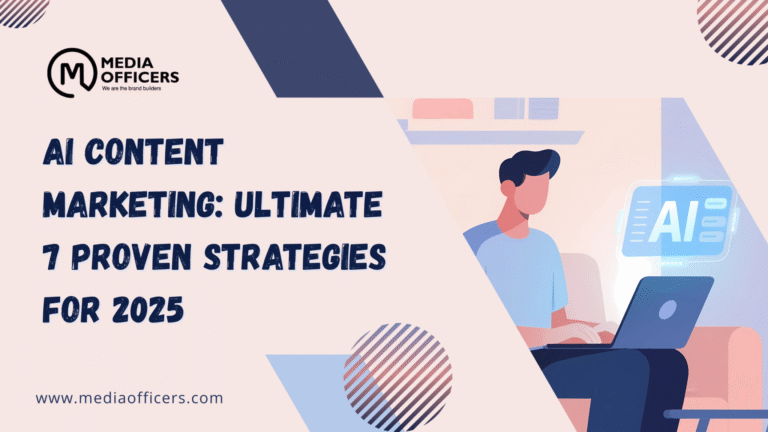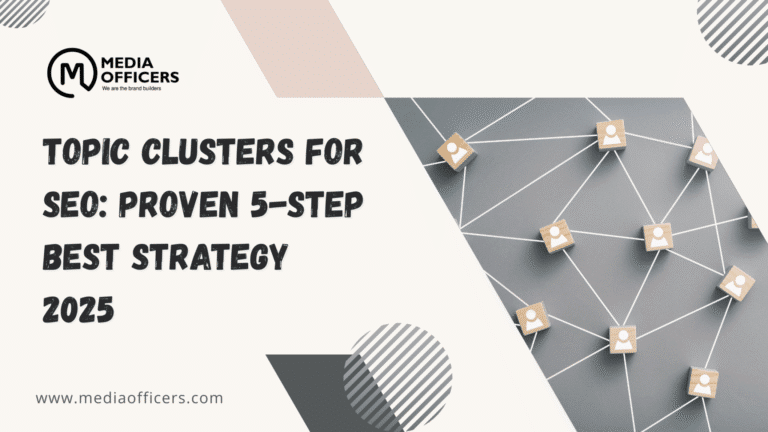AI Mode isn’t here to replace traditional search it’s expanding it, according to Google’s Robby Stein. In this new era, AI Mode acts as a layer that augments what users can do with the web, turning questions into richer, more actionable queries while preserving core search needs. This article breaks down how AI Mode works, why GEO and AEO matter, and what publishers can do to thrive as Google’s information engine evolves.
What is AI Mode?
AI-Mode is described as a new layer of Search that provides a consistent experience across devices, enabling conversational back-and-forth with state-of-the-art models. It leverages Google’s rich data assets the Shopping Graph with billions of products updated in real-time, Maps with hundreds of millions of places, financial data, and the broader web context to deliver high-quality, sourced answers. In practice, you can ask anything and AI Mode will synthesize information, link to sources, and let you drill deeper with follow-up questions.
AI-Mode is built to understand complex queries and provide context, so users don’t have to switch between different experiences. This makes it easier to ask multi-part questions, verify facts, and follow a logical path from overview to detail. The ultimate aim is a seamless conversation where you can switch topics without losing your place in the information journey. The result is a more efficient way to find precise numbers, directions, prices, and other actionable data all through one integrated interface that remains anchored in reliable sources.
AI Mode and the Expansionary Nature of Search
Robby Stein emphasizes that AI Mode represents an expansion rather than a replacement of traditional search. People already come to search for an incredibly wide array of needs from finding a phone number to checking prices, getting directions, or locating a specific payment page for taxes. AI Mode doesn’t erase these fundamental needs; it broadens them by enabling deeper, more conversational exploration. The expansion moment occurs because AI Mode makes it possible to ask more nuanced questions and to explore related information in a structured way, which leads to more searches and richer results.
One concrete signal of this expansion is the surge in visual search via Google Lens. Stein highlights a 70 percent year-over-year increase in visual searches, underscoring how multimodal abilities are shaping how people seek and verify information. AI Mode integrates with Lens so users can start with an image, then ask questions, and receive contextually linked results that include sources, maps, product details, and more. This demonstrates how AI Mode ties together multiple data domains to satisfy a broader set of informational needs.
GEO and the Content Strategy for the AI Era
The rise of GEO, or generative engine optimization, and its companion AEO concepts, has sparked questions about how to show up in AI-driven answers. Stein notes that the core rules haven’t fundamentally changed; AI continues to search, just faster and smarter. When an AI construct generates a response, it does a process known as query fan-out: the model expands the initial question into dozens of related queries and runs them in the background. It also makes requests to back-end data to fetch real-time information when needed. The result is a composite answer pulled from multiple sources in real time.
For publishers and creators, this means quality signals still matter, perhaps more than ever. Stein references Google’s quality rater guidelines and suggests that foundational SEO practices continue to apply in the GEO era. The questions publishers should ask themselves include: does the content satisfy the user’s intent, is it sourced, is information properly cited, and is it original rather than repetitive? The answer will often determine whether a piece of content appears in AI-generated results or is sidelined by it.
How AI Mode Uses the Google Search Backbone
Behind the scenes, AI-Mode relies on Google’s vast data backbone. It can access tens of billions of product listings, live prices updated by merchants, hundreds of millions of map records, and the full breadth of web content. This allows the AI to present an answer that is not only informative but also verifiable, with direct links to authoritative sources. Stein stresses that the AI is designed for information tasks planning, learning, verification not therapy, productivity, or creativity. This targeted focus helps ensure that users receive reliable, source-backed results when they ask questions.
In practice, this means AI Mode can guide users from high-level explanations to precise steps, with options to verify each claim. It acts as a bridge between the knowledge graph and live data, delivering context and links so users can dig deeper or cross-check details. For publishers, the takeaway is clear: structure content so it is easy for AI Mode to verify with credible sources and real-time data, and provide clear signals that demonstrate expertise, authority, and trustworthiness.
Content Strategy for Publishers in the AI Era
As AI-Mode reshapes how information is surfaced, publishers should adapt by aligning with how people use AI for increasingly complex inquiries. The expansionary moment means more questions around advice, how-to guidance, and multi-step scenarios. A practical approach includes the following:
- Align content with user intent: Map common user journeys from query to answer, and create content that satisfies those intent clusters. Anticipate follow-up questions and provide comprehensive, checkable paths to answers.
- Anchor content in credible sources: Cite primary sources, use authoritative references, and ensure that data points are traceable to verifiable origins. This supports AI Mode’s need for transparent, grounded answers.
- Offer depth and clarity: Produce long-form, well-structured content that explains concepts clearly and avoids superficial repetition. Original insights and unique perspectives boost credibility.
- Maintain up-to-date data: Regularly refresh information that AI Mode might pull in real time, such as prices, locations, hours of operation, and regulations.
- Optimize for internal connective tissue: Use clear topic clusters, interlink related articles, and create navigable content that AI Mode can follow to assemble richer responses.
Publishers should also consider adapting their formats. Step-by-step guides, detailed FAQs, visual explainers, and data-driven case studies tend to resonate well with AI Mode’s approach to answering questions with both depth and provenance. The result is content that serves human readers and AI Mode alike a win for user experience and search visibility.
Practical Guidelines for AI Mode and GEO Optimization
SEO in the GEO era remains anchored in core signals: relevance to user intent, quality of information, and the transparency of sources. Here are actionable guidelines you can apply today:
- Answer the question directly: Start with a concise answer, then provide supporting details and sources. This helps AI Mode surface your content for direct queries while offering pathways to deeper explanations.
- Provide clear citations: When you present facts, data, or quotes, link to reputable sources. This builds trust and improves the likelihood that AI Mode will reference your content as a credible resource.
- Differentiate with originals: Create unique analyses, case studies, or datasets that aren’t readily available elsewhere. Originality is a strong signal in the AI era.
- Refresh and validate: Regularly review content for accuracy, especially when dealing with live data, product pricing, or regulatory information.
- Structure for machine readability: Use descriptive headings, bulleted lists, and concise paragraphs so AI Mode can parse content effectively and assemble accurate answers.
In this context, AI-Mode acts as an information engine that assembles answers from a combination of internal data and live web signals. The better your content is at satisfying user intent and citing credible sources, the more likely it is to appear in AI-powered responses.
AI Mode and Visual Search: The Lens Connection
Google Lens plays a key role in the AI Mode ecosystem. Stein notes billions of visual searches, reflecting a growing expectation that people will upload or capture imagery and ask questions about what they see. AI Mode integrates with Lens to turn images into actionable insights pricing, availability, directions, or product details while maintaining linkable sources and verifiable data. For brands, this means ensuring product images, catalog data, and location details are accurate and richly described so AI Mode can extract value from visuals as well as text.
AI Mode vs Competitors: What Makes Google Different
Unlike some chatbot experiences, AI Mode is not a generic conversational agent. It is purpose-built for informational needs planning, research, verification while preserving the authority and provenance users expect from Google. This distinction matters because it frames how results are generated and how users verify information. The emphasis on context, sources, and live data differentiates AI Mode from tools designed for productivity or creative tasks, which may rely more heavily on internal generation rather than real-time sourcing. For publishers, this means focusing on clear, source-backed content that AI Mode can validate and reference when answering user questions.
Bottom Line: The Future of Search Is an Information Engine
The overarching takeaway from Google’s framing of AI-Mode is that search is expanding into multimodal, richly connected experiences rather than shrinking to keyword-driven queries. AI Mode is being designed to be the best possible tool for informational needs, guiding users from natural language questions to precise data, sources, and opportunities to delve deeper. As AI Mode becomes embedded in core experiences, accessibility to accurate information will depend on the integrity of your content, the clarity of your sources, and the usefulness of your answers. In this environment, optimizing for AI Mode and GEO means delivering high-quality, well-cited content that directly addresses user intent and invites verification and exploration.
Frequently Asked Questions
What exactly is AI Mode?
AI Mode is a new layer of Google Search that enables conversational, state-of-the-art interactions to deliver high-quality, sourced information. It uses live data and Google’s data assets to answer questions, while allowing follow-up queries and deeper exploration.
How do GEO and AEO affect SEO?
GEO and AEO refer to optimization for generative engines. The core signals user intent, credible sources, originality, and accurate data still apply. AI-driven answers rely on fast, precise verification, so content that clearly satisfies user intent and cites sources tends to perform best.
Is AI Mode a chatbot?
No. AI Mode is designed for informational needs such as planning, learning, and verification. It’s a layer within Google Search that surfaces structured, sourced answers rather than serving as a general-purpose conversational assistant.
How can publishers prepare for AI Mode?
Focus on matching user intent, citing credible sources, original analysis, and real-time data where applicable. Create well-structured content with clear topics, internal links, and updates to maintain accuracy. Ensure visuals and product data are accurate to support visual search and Lens-enabled queries.
Conclusion
Google’s AI Mode represents a pivotal step in the evolution of search, expanding the ways people ask, find, and verify information. By weaving together the breadth of Google’s data assets with multimodal capabilities, AI Mode aims to deliver high-quality, checkable results that align with user intent. For publishers, the path forward is clear: optimize for credible, original, well-cited content; structure information in a way that AI Mode can access and assemble; and keep data current across products, maps, and visuals. As AI Mode becomes more deeply integrated into core search experiences, the winners will be those who prioritize clarity, provenance, and usefulness in every piece of content.





